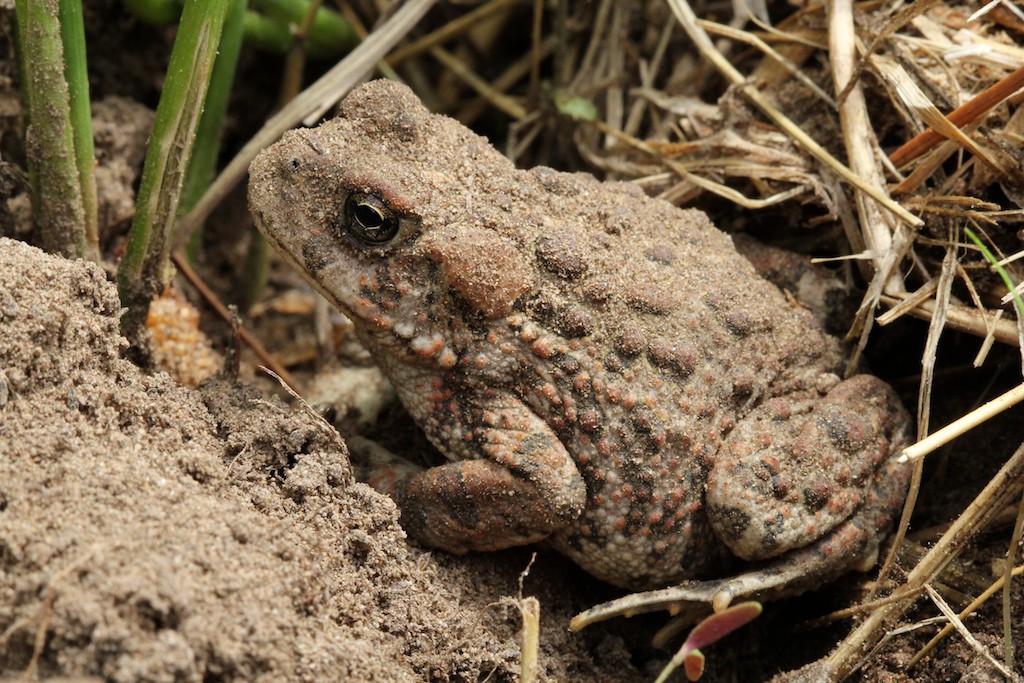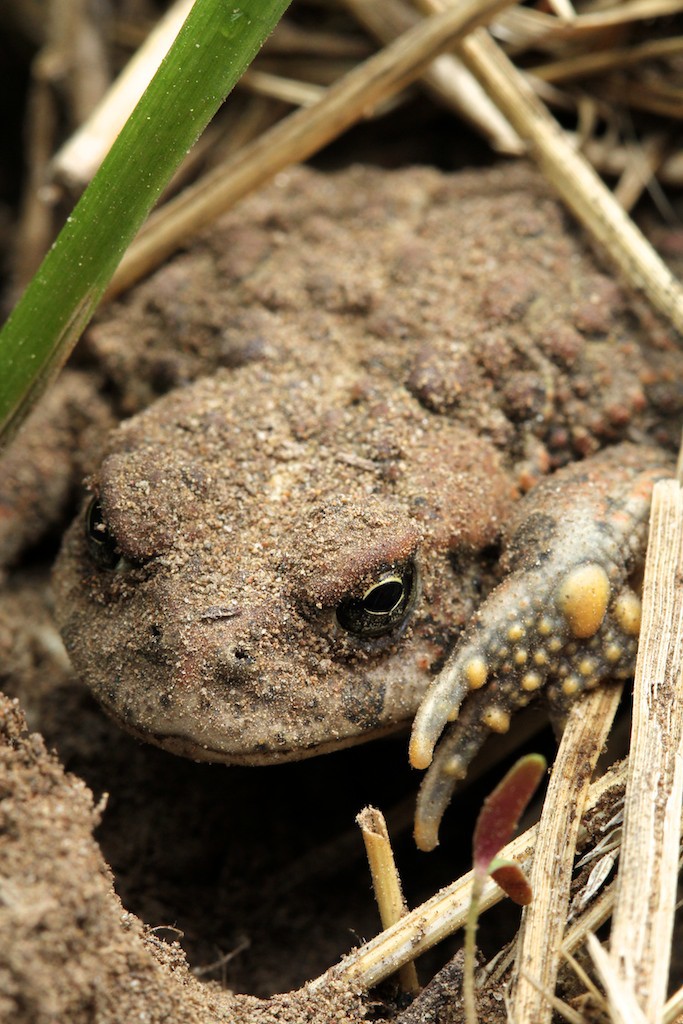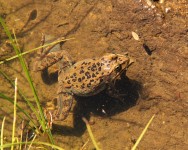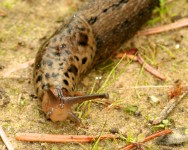Movement in the garden soil caught my eye as I was preparing to plant seeds. Larger than the spiders, grasshoppers and other insects I had already encountered, I inched closer and found a sand-covered toad. Digging with its back feet, the western toad was shimmying backwards into the soil.
The sand didn’t cover up all of the toad’s varying-sized warts. The large bump behind the eyes, called the parotoid gland, that is unique to toads was clearly visible. The prominent parotoid gland secretes a milky substance that is toxic to predators.
Bitter and sticky, the toxin causes a predator’s mouth to tingle or feel numb. Contradictory to popular belief, the toxin secreted from the warts won’t give people warts. The toxin is meant to deter predators but some animals still eat toads, including garter snakes, raccoons, ravens, crows and coyotes. When threatened, toads will also puff up to become harder to swallow, urinate and/or secrete a foul-smelling secretion from their warts.
With their quick, sticky tongue, toads are stealthy predators themselves. Adult toads eat flying insects, spiders, crayfish, dragonflies, ants and earthworms. Tadpoles feed on aquatic plants and algae.
Amphibians, including toads, are the only vertebrate to undergo metamorphosis, which is the transformation from an immature form to an adult form through distinct stages. Both frogs and toads lay eggs in the water, with the main difference being toad eggs are laid in strands and frog eggs are laid in clusters.
On average, a female western toad can produce 12,000 eggs in a single clutch but more than 99 percent of those eggs won’t survive to become adults. Frog and toad eggs are individually encased in a jelly-like substance.
Western toad eggs hatch into tadpoles and then they metamorphose into toadlets (miniature adults) in six to eight weeks. Several changes occur between the tadpole and toadlet stage.
The most noticeable difference is that tadpoles grow legs and absorb their tail back into their body to take on the adult form. Less noticeable is how they breathe. Living in the water tadpoles breathe through gills. During metamorphosis, the tadpoles grow lungs and absorb their gills.
A toad doesn’t breathe rhythmically like other mammals, including humans. Instead, toads only breathe with their lungs when they are active. When they are not active, they can absorb enough oxygen through their skin to meet their oxygen demands.
Toads are more active at night in the summer because of the cooler temperatures. Even though toads are cold-blooded like fish, turtles and snakes and need the sun to warm their muscles, too much heat can be detrimental.
During hot, summer days, toads seek refuge in animal burrows, under logs and leaf litter, in rock crevices, or by burying themselves in the soft soil. Tubercles on their hind feet (yellow bumps) aid them in digging holes.
Unlike frogs, toad feet lack webbing and toe pads. A frog’s strong, long legs and webbed hind feet aid in leaping and swimming, but the short hind legs of a toad lend more to walking and small hops.
Dark pads on the toad’s thumbs distinguish males from females. The thumb pads help the males cling to females while mating.
During mating season, toads return to their tadpole habitat of shallow water with sandy bottoms to mate. In winter toads dig to a location below frostline to hibernate. The rest of the year, toads live in forests and grasslands where food and moisture is abundant, including my garden.







I had caught a toad last night and it have red spots on him
So can I touch him without gloves on?
I would wear gloves just to be cautious until you can identify the toad and find out more information.